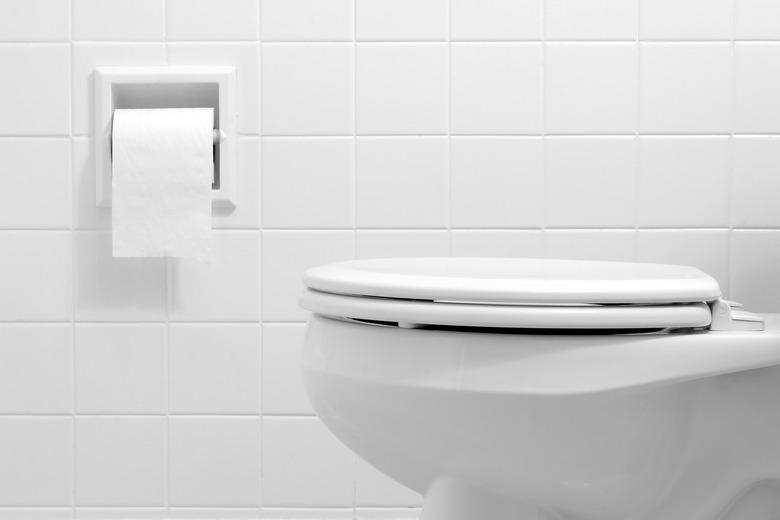One-Piece Vs. Two-Piece Toilets
The toilet is one of the most-used items in the home—and although these tough fixtures can last for more than a decade in the household, it's likely you'll want to replace yours before then (especially if you find yourself with a vintage Mamie pink or a cornflower blue toilet). While perhaps not the most exciting decision you'll make during a bathroom renovation project, at some point, you'll need to choose between a one-piece versus a two-piece toilet.
The two are exactly what they sound like, leaving you with a pleasantly straightforward choice. The most common are two-piece toilets, which consist of a separate bowl and tank that get fitted together. A one-piece toilet, as its name suggests, is a single unit where the bowl and the tank are formed together.
Two-Piece Toilets
Two-Piece Toilets
Two-piece toilets are the most common type, and you likely have one in your home now. These toilets consist of a separate bowl and tank that you or your plumber bolt together. This is perhaps the most important distinction in the decision of one-piece versus two-piece toilets. A two-piece toilet is easier to install without a helper since you can carry and install the parts one at a time.
Both one-piece and two-piece toilets last for around 15 years, according to Angie's List. If part of your toilet does break, however, a two-piece toilet allows you to replace only the toilet bowl or tank rather than replacing the entire unit.
Because they're readily available and easy to ship, two-piece toilets also tend to cost less than their one-piece counterparts. The price of a two-piece toilet can vary greatly from one toilet to another depending on what features you want. A basic two-piece toilet, however, can be had for as little as $90.
Two-piece toilets are easier to install because you are only lifting one piece at a time (as opposed to lifting a very hefty one-piece toilet), but you must still install each piece carefully. If you tighten the bolts that hold the tank to the bowl too tightly, you can crack the porcelain. Two-piece toilets also feature a rubber gasket that sits between the tank and the bowl. This gasket can wear and allow leaks, which is an issue you won't have with a one-piece toilet.
One-Piece Toilets
One-Piece Toilets
Sleek and seamless, one-piece toilets work in the exact same way as their two-piece cousins. The only difference is that the bowl and tank are made together rather than manufactured as two separate pieces. Otherwise, you'll find them largely the same as their two-piece counterparts.
Both one-piece and two-piece units come with round or elongated bowls, and both are available in a standard 15-inch seat height or in a 17- or 19-inch chair height, which is sometimes referred to as comfort height. Both toilet types can use gravity-feed or power-assisted flushing mechanisms, and both employ various water efficiency features.
When considering one-piece versus two-piece toilets, ease of cleaning is the main benefit of the one-piece toilet. The one-piece construction eliminates the dirt-collecting groove between the tank and the bowl while reducing the risk of a leak forming between the two.
The downside, however, is that you will need a second set of hands when installing a one-piece toilet since you can't break it down into smaller, more manageable parts. Because they cost more to manufacture, one-piece toilets also tend to be more expensive. Again, the features you want will affect the price, but one-piece toilets start at about $150 and go up from there.
The Technical Considerations for Toilet Installation
The Technical Considerations for Toilet Installation
Most homeowners need only the basics when weighing the choice of a one-piece versus a two-piece toilet. If you're taking the DIY route, however, you may need to dig a little deeper. Because of their one-piece construction, the top of a one-piece toilet tank usually sits lower than the tank on a two-piece toilet. This smaller stature lets you fit a one-piece toilet into a smaller space, but that doesn't tell the whole story.
Remember that the rough-in measurement is the most important one when choosing a toilet. The rough-in measurement is the distance from the center of the drainpipe to the wall behind the toilet. According to Kohler, a 12-inch rough-in is the most common, but 10- and 14-inch rough-ins are available.
If your measurement is odd, round it down to the nearest standard measurement (10, 12 or 14 inches). If you need a 12-inch rough-in, you'll have plenty of options. If you have a 10- or 14-inch rough-in, however, your choices will be more limited. You can still have a one- or two-piece toilet, but you'll generally have more two-piece options than you will one-piece choices. If faced with limited choices, you may find that there are features that are far more important to you than whether the toilet is a one-piece or two-piece unit.
